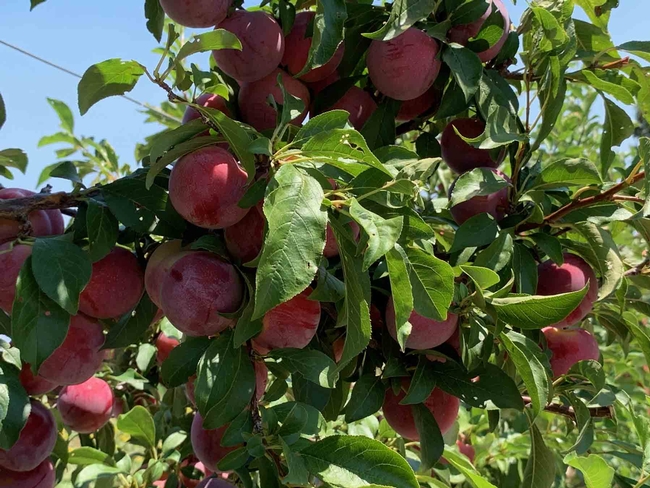A great choice for the home orchard is the Pluot, a plum-apricot hybrid. Pluots (pronounced plew-otts) are like plums in flavor and texture, but are sweeter and less acidic. Many pluot varieties are actually sweeter than either parent.

Pluots are easy to grow and contain Vitamin A, Vitamin C, potassium, and fiber, in addition to naturally-occurring phytonutrients and antioxidants. They contain no fat and are sodium free.
The plant breeder, Floyd Zaiger (of Zaiger's Genetics ) created the pluot in the late 1980s by backcrossing Luther Burbank's less-than-successful 19th-century plumcot with a plum . Some people assume that pluots must be genetically engineered but that is not the case. Those who avoid genetically modified foods need not fear: pluots were developed using traditional hand-pollinated horticultural methods.
There are two keys to success with pluots. First, it is important to consider the number of chill hours required by a pluot variety. Chill hours, indicated on the fruit tree tag, refer to the number of hours below 45 degrees Fahrenheit that a tree requires each dormant season in order to bloom and set fruit properly. Pluot chill hours vary from under 400 to about 800 but most varieties require between 400 and 600 chill hours, as do many peach varieties. Not surprisingly, most pluots do well in our area and there are even some varieties best suited for local microclimates.
The second crucial requirement for pluot success is a nearby pollinator. Pluots are not “self-fruitful,” which means they require an external pollinator to set fruit. Depending on the variety, a plum or another pluot planted within 100 feet will do the job. Check the fruit tag or talk to the nursery about which pollinator is required for the pluot variety you are considering.
Pluots require the same basic care as plum trees. For the first few years, provide adequate water, especially during the growing season, but after trees are established provide less frequent but deep irrigation. Mulch as often as necessary to block weeds around the base of the tree, and feed lightly twice a year (in early spring and late summer) with compost or a nitrogen fertilizer such as ammonium sulfate. Pluots are susceptible to aphid attacks and various fungal problems. For mild aphid infestation, simply use a hose to spray them off or a nontoxic neem oil or insecticidal soap spray; extreme cases may require a dormant oil spray to smother overwintering aphid eggs. Avoid fungal problems with a preventive approach: twice a year (in fall after leaf drop and early spring before buds swell), spray trees with lime-sulphur or copper. Fruit trees require pruning to stay healthy and produce plentiful and high quality fruit; don't be afraid to use pruning to keep your pluot tree extremely low so it's easy to reach the fruit.
Now is not the time to plant a pluot but it is the perfect time to do some research on the many types of pluots that might do well in your yard. From now until September, tasting the various types of pluots as they come into season will help you decide which varieties you might want in your own home orchard.
UC Master Gardeners of Butte County are part of the University of California Cooperative Extension (UCCE) system. To learn more about us and our upcoming events, and for help with gardening in our area visit our website. If you have a gardening question or problem, email the Hotline at mgbutte@ucanr.edu or leave a phone message on our Hotline at 530-552-5812. To speak to a Master Gardener about a gardening issue, or to drop by the MG office during Hotline hours, see the most current information on our Ask Us section of our website.